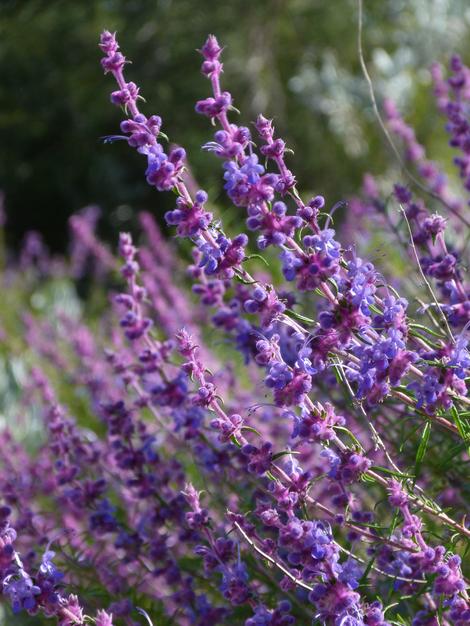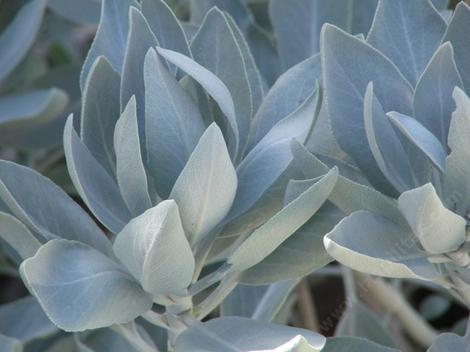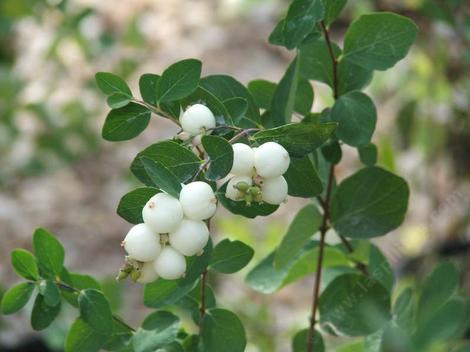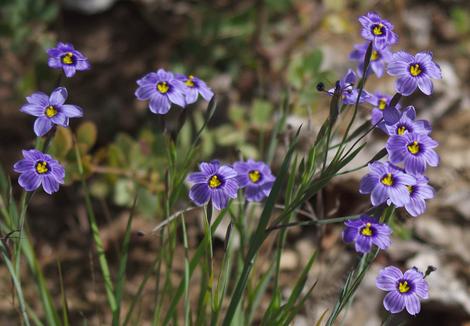-local plants have higher value for local wildlife. Birds and butterflies can use the plant they co-evolved with.
-These plants grow in the wild with around 15 inches of rainfall, same as LA. So once they are established they are good to go.
-Locally native plants grow in the local soil, so no amendments necessary.
Pretty simple!

Small landscape trees... more for effect than shade.
Chilopsis
linearis, Desert Willow.
This one is kind of a cheat. I wanted to make this
list locally native. This is actually not native in Los Angeles
county but it is in Riverside County, so close by. . I love this
tree. It is fast growing but needs no water after it is
established.
Water it more, though, and it will grow faster. It has an elegant
form
and dainty little orchid-like flowers that attract hummingbirds.
Desert Willow
flowers through most of the summer and the flowers have a delicate
fragrance. Place it next to a high-use summer area like an
outdoor entertaining area or a patio. Full sun and more heat means
more
flowers.
Arctostaphylos
glauca, Blue Manzanita
a small tree, or large
shrub if you don't prune it up, that has bold, beautiful structure.
The luster of the reddish brown bark contrasts strikingly with the
blue-silver foliage. White flowers appear in winter when nectar
sources are few and far between. Great for hummingbirds. Looks
great
all year. Slower growing than the other two options. Full sun to
part
shade.
Ceanothus
arboreus Tree Lilac
This fast growing evergreen tree
has pretty, light blue flowers in spring. Not a large canopy, more
columnar in form. This is a good one for hiding a window from the
street. A central, more upright plant for the front yard. Full
sun.
Screening and privacy hedge plants
Ceanothus
leucodermis 'LT
Blue' White Bark California Lilac
Ceanothus leucodermis is the wild species
that grows around Los Angeles. However, it is hard to find in
cultivation and is harder to grow in the landscape. This cultivar,
'L.T. Blue' is a lot less prone to death. It has white bark and
lush-
looking green, glossy leaves. Flowers are light blue and fragrant.
Use
this Ceanothus as a fast screen or to break up a long wall or
fence.
Plant 5 feet apart for a screen. Full sun.
Cercocarpus
betuloides Mountain Mahogany
This one is good if you need some screening but don't have a lot
of width available. It can get tall, 12 ft or more, but can pretty
easily be kept 3 or 4 feet wide. So, it's great for those narrow
spaces, like between neighboring driveways or along narrow
sidewalks
along the side of the house. Plant every 3 feet for a nice dense
hedge. Plant in part shade to full sun.
Heteromeles
arbutifolia,Toyon or Rhus
ovata, Sugar Bush; these two are both fatter choices.
They can
be 6 or 8 feet wide. So they are great if you have a lot of space
and
need to cover a lot of ground but probably not as good for small
yards. More bang for your buck, but only if you have the space.
Great
for birds. Of the two, Toyon can tolerate more shade. Both will
also
work in full sun.
Taller shrubs for specimens or
accents..
Ribes
indecorum, White Chaparral Currant or Ribes
malvaceum, Pink Chaparral currant
These guys are
very similar. Both are attractive dryland currant species. They
both
don't appreciate a lot of water. They have pretty flowers in
winter.
The R. indecorum is white, and the R. malvaceum is pink. They also
have very interesting-smelling leaves, sort of foresty.
These are good for hummingbirds in the winter and berry eating
birds
like California thrasher, in the summer. R. indecorum can take
more
shade. Both favor a little afternoon shade. Don't get these
confused
with R. sanguineum glutinosum, which is commonly available in pink
and
white. That currant grows in creeks naturally and needs a lot more
water than these two species.
Malacothamnus
fasciculatus, Bush mallow
A tall
upright shrub with silver-gray, soft foliage and pink flowers.
Plant
in full sun but tucked behind other plants.
Low shrubs
Encelia
californica, Bush Sunflower or Helianthus
gracilentus, Slender Sunflower
Encelia is the more evergreen of the two. But I think
Helianthus is a little prettier when it is flowering. Neither of
these looks supper tidy all the time so don't use a ton of them in
your front yard. A patch of 3 is nice though mixed in with sages
and
buckwheats.
full sun
Eriogonum
fasciculatum foliolosum, California Buckwheat
The baby's breath of
your landscape arrangement. This guy has white flowers that then
turn
chocolate in the fall. It makes a great filler. Full sun.
Salvia
leucophylla, Purple Sage
'Salvia Pozo Blue'
or
Trichostema
lanatum, Woolly Blue Curls
I would pick one or the other of these in your landscape. As both of them in a small yard might be a bit cluttered. Salvia leucophylla is the locally native species but I listed the 'Pozo Blue' hybrid because we introduced it and I really like it. It can tolerate a lot of different conditions. It has an extended flowering period, and it has darker-colored flowers. The birds and butterflies seem to like it, too. But if you want to stay local, go with a cultivar like S. leucophylla 'Point Sal'.
The Woolly Blue Curls is a stunning plant and locally native.
However, it is more finicky. If you can get it to work it is
gorgeous
but a lot of people have trouble with it. Be careful not to over
water it. Just give it enough to get it established and don't
water
it in the summer, especially if you have heavy soil. It has large
purple flower spikes and will flower repeatedly in the spring and
summer if you dead-head-it. Full sun for both.
Salvia
apiana, White sage
White sage has a great fragrance and white foliage. This looks
great
contrasted with the woolly blue curls.
Flowery perennials
Colorful plants for along pathways or fronting high
visual areas or just for patches of low color. Use alternately on
another side of the path to the front door. Perfect symmetrical
rows look too contrived. Do six staggered on the right side of the
path
then 6 staggered on the left and then six back on the right again
etc. Change the size of these groups based on the length and size
of
the path,so they are to scale. So, for a short, small entry walk
use
only 3 per group.
Zauschneria
cana 'Hollywood Flame' California Fuchsia
A great late
summer flower, good for hummingbirds. Cut back to a few inches
above the ground in the winter when it dies back. Great for summer
color. full sun to part shade.
Penstemon
heterophyllus or
'Margarita
BOP'
The locally native species is P. heterophyllus but it is
harder to find and more finicky than BOP. I also like Margarita
BOP
because it is our most popular introduction. It is even being
grown
in Europe now. It can take more irrigation than the wild species,
yet
is almost as drought tolerant. Margarita BOP has a much longer
flowering period than the wild type and it is more tidy and
compact.
Some landscapers like to mix Zauschneria and Penstemon together. I
think it is too jarring. Sort of like eating ice cream and cookies
together. The wild species seems to take a little afternoon shade
okay but both flower better in the sun.
Eriophyllum
confertiflorum Golden Yarrow (the worst common name
ever. This is NOT yarrow)
I think this guy works well with either the
Zauschneria or the Penstemon, if you want to mix things up. This
little compact perennial is extremely drought tolerant and is a
good
insect nectary. Full sun
Taller showy flowers for spots of
color or use in mass for an English garden effect; plant in clumps
of
3, 5 or 9 etc.
Penstemon
centranthifolius, Scarlet Bugler and or P.
spectabalis
Showy Penstemon
Showy Penstemon is more tolerant of wet clay than the Penstemon centranthifolius. If you
are a chronic waterer
and have heavy soil pick P. spectabilis. If you have well draining
soil
or don't plan to water, you can use Scarlet Bugler.
Clump with boulders
Diplacus
aurantiacus, Yellow Sticky Monkey flower
and/or
Diplacus
rutilus Red Santa Susana Monkey flower.
These aren't just pick-your-favorite-color plants. There are some nuances to these two guys. The yellow Sticky Monkey tolerates clay soil better and coastal climates well. The red prefers more well- drained soil and likes some heat. Both can take a little shade but prefer sun. Plant them on the east face of a rock for maximum flowering and plant happiness. Trim back in the fall for a tidier plant in the spring
Ground covers...UHG!
Most low plants fry in
LA. Most low plants have adapted their short stature to deal with
salt spray or high winds along coastal bluffs or to handle snow at
high elevations. So low and creeping usually means the plants came
from area with high humidity and precipitation. Not LA., although I
guess sometimes the humidity fits the bill. So without water they
usually look ratty and brown or just shrivel up and die. There are
a
few native exceptions that seem to work okay.
Iva doesn't do anything but be green. Good for the weed slope behind your house that you can't really see most of the time but is a weed patch you don't want the neighbors to keep staring at. Throw in some Pozo blue or buckwheat to add some pizazz if you are doing a large area.
Salvia
Gracias, Creeping sage
This low silver sage covers 8 by 8 ft areas. Use
in front of taller shrubs and break up with patches of Penstemon or
rock outcroppings with monkey flowers. Use to create continuity
and
tie your landscape together.
I want to also include in here my pet peeves for southern
California. Arctostaphlyos edmundsii or uva-ursi. These guys grow
in
the wild in areas of double or triple the rainfall of LA. Don't
get
me wrong, I love both of them. They are beautiful but “drought
tolerant' or “California native” doesn't mean appropriate for any
location in California. I'll have to rant on about that in another blog.
If
you use these guys, expect to water a lot more. High humidity or
fog can go
along way with low rainfall but inland LA is not a good place for
northern California coastal plants.
Part/full shade plants for under oaks or the north side of the house, fence etc.
Taller back drop plants or specimens
Lepechinia
fragrans, Wallace's Pitcher Plant.
Fragrant foliage and large fat purple flowers.
Ribes
speciosum, Fuchsia-Flowering Gooseberry
The
deep red fuchsia flowers are a favorite of hummingbirds. Dark
glossy
green leaves are a lovely addition to a shade garden, this plant
will
go deciduous when the soil gets dry. So don't pull it out in
August
when you think it died. Just wait for the first rain when leaves
will
reemerge. This guy is really thorny so don't plant it near a path
or
some place that needs maintenance. Although in some areas of LA it
is great for under the windows. He he he...
Low ground covers
Ribes
viburnifolium, Catalina Perfume.
Salvia
spathacea, Hummingbird Sage
place the Salvia in front of the taller Ribes.
Plant in mass for
best effect.
Green filler.
Symphoricarpos
albus laevigatus, Snow berry
Plant in mass. Beautiful lacy green leaves in summer and
naked stems
with white berries in winter.
a splash of yellow?
Venegasia
carpesioides Canyon Sunflower
Stick a few in the corner for color.
Grasses or grass-like meadow things
People like to create a meadow with
these guys. Not my favorite idea as this isn't the Sierras.
We have weedy cow pastures in California or denuded hills of
mustard and oats...not really something I would want to emulate,
but if you must. These three species do occur together in the
wild. The meadow is the place that will look like a weed patch off
season. It will be as pretty as it will be ugly. A small patch
looks pretty cool. Throw in some annual wildflowers to
make a really stunning show.
Sisyrinchium
bellum, Blue-Eyed Grass
Sidalcea
malvaeflora, Checkerbloom
Stipa
(Nassella) pulchra, Purple Needle Grass
Best bird plants
Place these bird magnets in a back corner of the yard where
you can see them from the the kitchen window or patio. So
you
can enjoy watching who comes to dine!
Mahonia
nevinii, Nevin's Barberry
Poky leaves
but evergreen and attractive; yellow flowers and red berries that
brings the birds in droves in the summer. .
Sambucus
mexicana, Mexican elderberry
Summer deciduous if dry. Fragrant flowers and berries for birds in
summer.


















